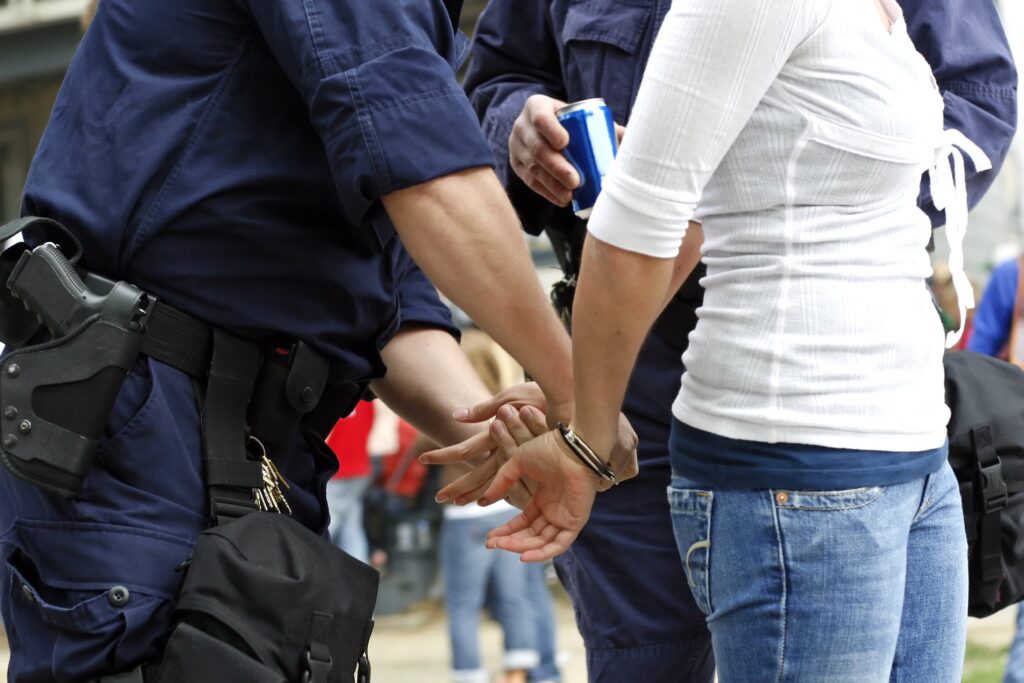The Trump Administration completely ignores overwhelming evidence that mistrust between the police and communities of color are the results of poverty and racism.
February 16, 2017

As we commemorate Black History Month, it is important to take stock of historical problems facing black communities. In recent years, addressing unfair law enforcement has been thrust to the fore.
But in face of a growing recognition that racially biased policing is a pressing problem, the Trump Administration recently announced a commitment to end a “dangerous anti-police atmosphere” and prevent youth from protesting in the streets. The official White House website alludes to rioters, looters, and violent disrupters — a clear shot at the growing protest movement against police brutality.
The Trump Administration completely ignores overwhelming evidence that mistrust between the police and communities of color are the results of poverty and racism — factors that the Obama Administration consistently recognized.
The relationship between law enforcement officers and schools in the United States began in the 1950’s, during an era of increasing poverty in urban areas and growing fear of black youth. In response to widespread perceptions of a juvenile delinquency crisis, politicians focused almost exclusively on the growth of gangs and remained deafeningly silent on the glaring economic conditions that gave rise to them.
Good-paying jobs literally vanished, as meatpacking, iron, and steel factories closed and workers were left with low-paying service sector jobs. Hundreds of thousands of people were displaced from their homes as urban renewal made way for downtown business districts or interstate highways. Even the black families who could afford homes were prevented from building equity, and their neighborhoods were redlined through biased federal homeownership policies. The staggering results: poor housing, high population density, high unemployment, and overcrowded schools in black neighborhoods.
Although black youths were the victims of this massive disinvestment in their homes, communities, and schools, government responded with “law-and-order” policies that, among other things, increased the number of police officers in schools and on the streets. This laid the foundation for a relationship between law enforcement and youth — a relationship that been tense over the last 60 years. The Trump Administration’s recent call for “law and order” in the face of public protest showcases historical amnesia about this troubled relationship.
Research shows that the mere presence of police officers in school increases the likelihood that a student will be referred to law enforcement for adolescent behavior. A new Shriver Center report, Handcuffs and Hallways: The State of Policing in Chicago Public Schools, documents the nightmare of law enforcement officers who lack any specialized training for interacting with children being assigned to schools and the resulting civil rights violations suffered by students. After detailing police misconduct in Chicago Public Schools (CPS) — one of the largest school systems in the country, and one located in a city at the center of concerns over biased and abusive policing — the report draws from national best practices and offers recommendations to disrupt the school-to-prison pipeline.
The Trump Administration suggests that rioters and looters have created an anti-police atmosphere. This smacks of placing the blame for failed “law-and-order” and “tough on crime” policies on children, especially young black men and boys. It is the very rhetoric and logic that helped give rise to mass incarceration.
Policies that have resulted in the over policing of our schools have only criminalized youthful behavior and put students on the fast track to the school-to-prison pipeline. It’s time to reexamine the role of law enforcement in schools. As long as police remain in schools, they must be properly trained, held accountable, and supervised. Anything less will leave our children and collective future in serious jeopardy.